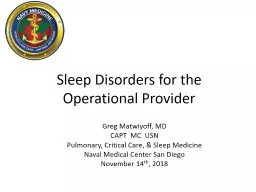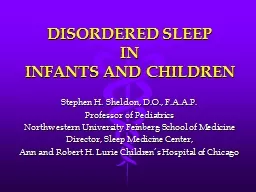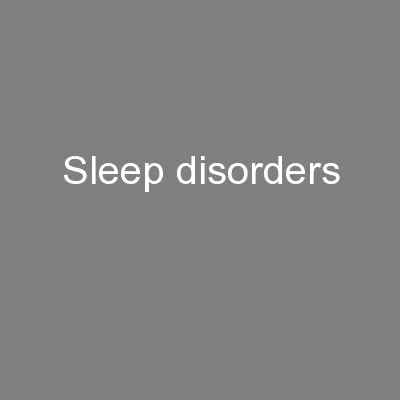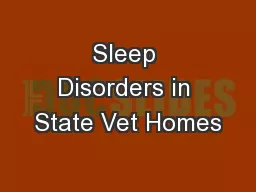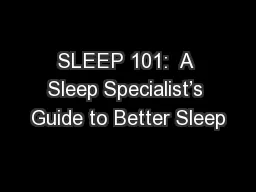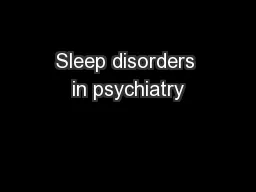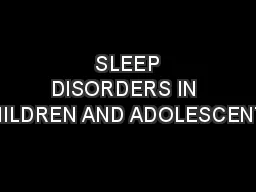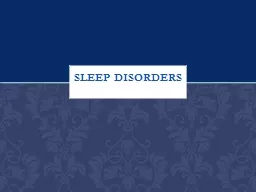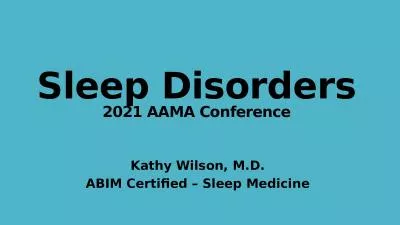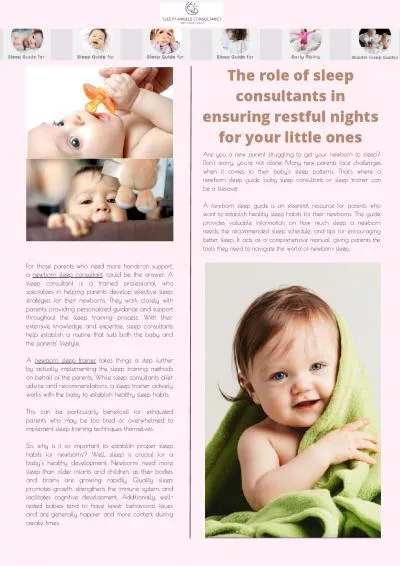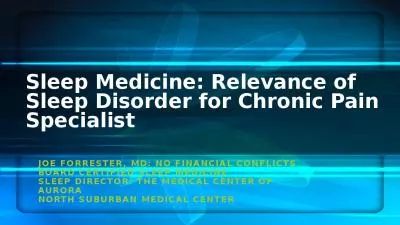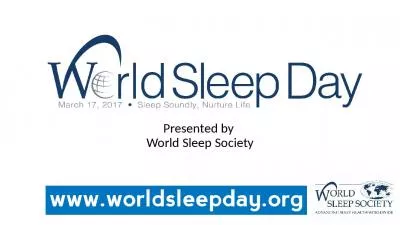PPT-Sleep Disorders for the Operational Provider
Author : yoshiko-marsland | Published Date : 2018-11-24
Greg Matwiyoff MD CAPT MC USN Pulmonary Critical Care amp Sleep Medicine Naval Medical Center San Diego November 14 th 2018 Disclosure I wish Objectives Normal
Presentation Embed Code
Download Presentation
Download Presentation The PPT/PDF document "Sleep Disorders for the Operational Prov..." is the property of its rightful owner. Permission is granted to download and print the materials on this website for personal, non-commercial use only, and to display it on your personal computer provided you do not modify the materials and that you retain all copyright notices contained in the materials. By downloading content from our website, you accept the terms of this agreement.
Sleep Disorders for the Operational Provider: Transcript
Download Rules Of Document
"Sleep Disorders for the Operational Provider"The content belongs to its owner. You may download and print it for personal use, without modification, and keep all copyright notices. By downloading, you agree to these terms.
Related Documents

